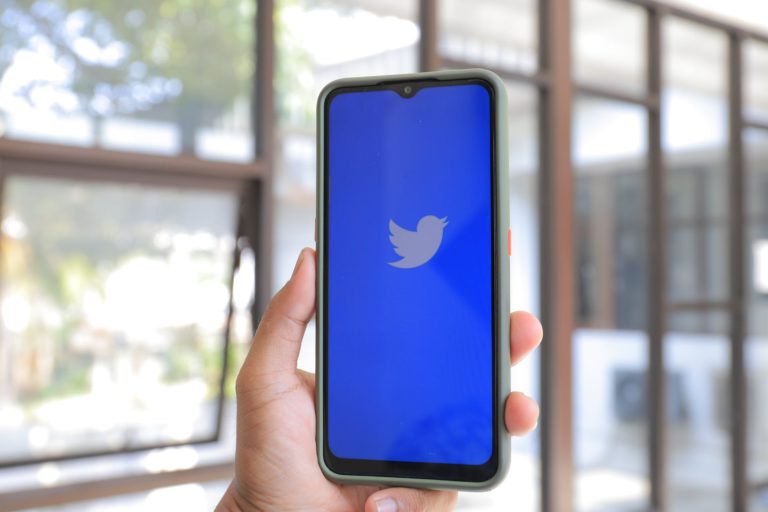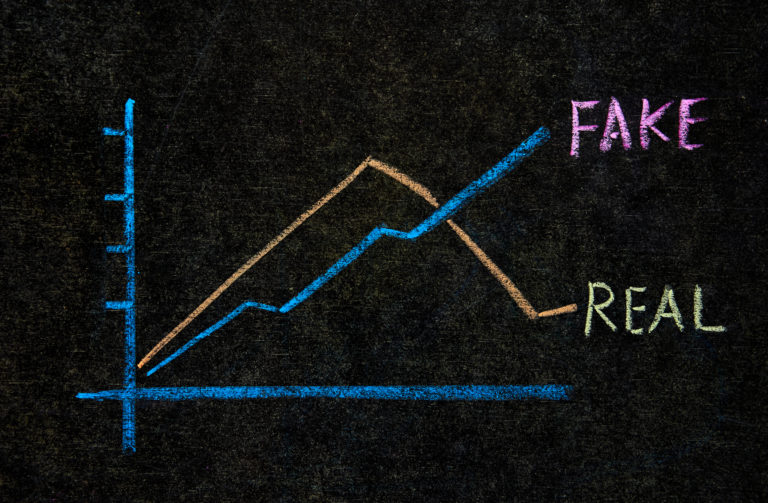War Comes to the Small Screen
Russia’s invasion of Ukraine has marked a turning point for the use of social media in war.
To be sure, this is far from the first conflict in which social media plays a key role. The “Arab Spring” of 2010-2011 likely gets that distinction, when hundreds of thousands of citizens in Arab-speaking nations networked their common cause on Facebook and elsewhere and rose up in democratic protests against their governments. Then, later in that decade, social media played a key role conveying the gripping stories of the more conventional conflicts of Syria and Afghanistan. By the 2010’s, in our own battle against Islamic extremism, social media featured prominently in recruitment, terror, propaganda, and victory.
From the Arab Spring of 2010 to today, social media’s membership has soared, from “just” tens of millions of people to now nearly 5 of the 8 billion people on earth. Today’s pervasive use of social media in Ukraine conflict feels much bigger in scope, and there’s something new. The stakes — war in Europe and potential for World War III — are higher. But what also seems new is that this time, this conflict already seems far more participatory, involving broad segments of society.
We see the besieged and attackers. We see soldiers, citizens, political and corporate leaders, journalists, corporate brands, celebrities and governments, who all have something to say. We see partisans in the fight flock to “user generated content” platforms, from Github to Yelp to Google Maps. Every social product of any size now needs a wartime strategy.
The Washington Post catalogued many examples of Ukranians using social media to tell remarkable stories, from the everyday citizen moving a personnel mine to a safe location to an elderly gentleman kneeling before a Russian tank. But Twitter, Facebook and Instagram are no longer just storytelling apps, and the events shaking eastern Europe are not read-only. In many ways, they are calls to us for our interaction and engagement. We are not yet, thank God, at World War, but in a profound way, all five billion of us on social media are being invited in.
There are buttons with verbs in social media. Share. Donate. Like. Retweet. Protest. Organize. Support. Report. Mute. Share. Reject. Block. Social media enables all of this from afar. These verbs also whisper to us, ever so quietly: Decide.
And decide we must, because to simply scroll on feels heartless. In the twentieth century, the abominable concept of “Total War” declared civilians and associated resources as legitimate targets. In the era of social media, we citizens seem not just collateral damage, but the door opens to being collateral participants. Do we walk through it?
Governments have shut airspaces down, but not cyberspace. If you are so inclined, you can engage directly with Russian citizens in many corners of the Internet – sites like duolingo and Interpals still offer the ability to chat with Russian-speakers. It boggles my mind that Russia can be firing missiles into Ukraine, and we in the West can be taking unprecedented, aggressive actions which risk cratering their economy, but we can still engage with the citizenry if we’d like, whenever we’d like.
Unlike even twenty years ago, social media now gives us the means to actually “participate”, at some level, from across the globe, not just to register our support, but to do something related to its outcome.
Wartime communication comes in many forms. There are secret tactical and strategic communications among combatants and allies. There’s propaganda, meant to promote a particular cause or point of view. There are morale-boosting missives and stories from the front to the population. There are psychological operations (“psyops”) waged against the enemy. There’s high-level diplomacy. There’s logistics and production planning. And there’s journalism and documentation for posterity.
Today, social media touches all of these forms, and profoundly changes many of them. That’s because social media has many attributes other media does not: it is global, instantaneous, emotional, participatory, and many-to-many.
We’ve already witnessed a few groundbreaking examples of how these attributes have transformed wartime communication.
Social Media Is Global.
Do you want to contribute to the defense of Ukraine without donning a uniform? There are a variety of non-governmental organizations to which you can donate. But brand new for 2022, the official Ukrainian government Twitter account (@ukraine) has a Bitcoin donation link pinned to its profile:
Yes, that’s right. With a few clicks, you can instantly donate money directly to the government of Ukraine. So long, allied war bonds, or even waiting for your own government to send more aid. Supporting a war effort is now as easy as adding an extra 20% tip at Starbucks.
Or do you want to interact with your adversaries more directly, to try to better understand or inform them, cyber-harass them, or attempt to boot them from a given platform? Hacktivist group Anonymous is encouraging people to write reviews of Russian-based businesses and restaurants to convey messages to the people of Russia, to try to get around state-media control.
Are your desires more juvenile? A TikTok video encourages you to go to Google Maps and re-label Russia’s official embassies as “public toilets.” UPDATE: Google has placed restrictions on this activity:

And pro-Russian activists are currently brigading one of the most popular open source code repositories on GitHub: Facebook’s open source React framework. They’re posting pro-Russia messages.
The point: this is a war involving not just combatants in Ukraine, but those of us in the crowd. Every social product of any scale now needs a wartime strategy.
Social Media is Emotional, Ubiquitous and Instantaneous.
Ukraine’s citizens and leaders are sharing heartbreaking videos directly to us on Instagram and Twitter. They’re telling the stories of heroes and victims, crying out for our help.
These direct video pleas are a far cry from how many of us digested international conflicts decades ago: they’re not just an international interest segment tacked onto a nightly newscast. The pleas are integrated into our daily lives as we scroll through our feeds. These are the compelling stories of 43 million Ukrainians, many of whom speak English. They want and need us involved.
We can also watch things unfold as never before. Heard about the 40-mile long Russian convoy lumbering toward Kyiv? We can follow along via a street-level view via Google Maps. Want to watch what’s happening live, via dozens of webcams? There’s a website for that.
Humans are a story-telling species. Wartime communication used to rely heavily upon correspondents, filmmakers, military journalists, radio personalities and famed directors to get the battlefield news to an audience. Now, they are relegated to editorial and summary roles. If you want the very latest information, you rush to Twitter; the nightly newscast operates on a more glacial pace by comparison. Even television journalists now spend a great deal of time highlighting what’s being reported on social media.
In World War II, the process of getting video footage to the home front took months. Hollywood director John Ford traveled to Midway Island in early June 1942 with two cameramen. Two days later, on June 4, 1942, they filmed the first wave of Japanese Zeros as they strafed the island. After the battle, Ford sent the film back to the States, which was developed and hastily edited into a theatrical documentary with voiceover. The result: film of a battle shown in record time to a home-front audience, a mere three and a half months after the first bullets of the Battle of Midway were fired.
Today, not only is storytelling instantaneous, it’s also much more intimate and direct. There’s usually no director. Anyone with a cellphone can tell their own story, and often doing so is more compelling, but fraught with risk of forgery.
In the attention economy, the scarcest resource is our consideration, that which what we pay heed to. Nuance takes longer. So quick, shocking, humorous or heartbreaking memes are often what break through.
We’re getting selfie videos directly from the Prime Minister of Ukraine, via the small screen in our pockets. It’s available everywhere, not just when we’re ready for it. We can be in line at the grocery store checkout, and hear the breaks in his voice through our AirPods. At any time, and at any moment, we can be witness to his steadfast bravery; it’s integrated into our day.
Zelensky is marshaling this breakthrough power capably and creatively. A week ago, he broadcast a powerful speech directly to the Russian people, circumventing journalist intermediaries. With more than 114 million Russians on the Internet, plus the many who were willing to translate, caption and redistribute, the whole world received his message within hours.
To a global audience that has Zoomed its way through the past two years, being able to see the human side of a leader in a war-torn nation speak out through our small screens feels at once both entirely natural, but also surreal. It is often unedited and raw. It is profoundly new.
Zelensky is extremely well-suited to this role. Prime Minister Volodymyr Zelensky is a former entertainer, voice actor and comedian. He was the voice of the Ukraine version of Paddington Bear. He’s charismatic, his cause is clearly just, and he knows how to speak to the camera. His use of Twitter (where he has 4.3 million followers) and Instagram (where he has 13.7 million followers) has been masterful. We see Zelensky making human, passionate pleas, often arm in arm with compatriots. His warmth and humanity come through clearly to millions.
Opposing him, we see Vladimir Putin, a vestige of the nightly broadcast, state television world. He gazes sternly from one end of his 20-foot long gold accented table, bunkered deep in the Urals. He’s formal, rigid, isolated and distant. His mannerisms and demeanor might have been well-suited to the fixed-format communications of the 1980’s, where projecting power and formality spoke volumes. But now he seems anachronistic. He leads a superpower, but gets an F for 2020’s era social media presence to billions of people who value authenticity, warmth and story.
With every communication, the people of Ukraine are saying “we are here, on our land, in our homes, and an invader is trying to take it from us brutally.” Their message cc:’s the world. Messages go out to allies and foes alike. Citizens and leaders of Russia and Belarus are watching.
Russia, meanwhile, is going through its own transformation of media consumption. State television’s former dominance of news is slipping, and the information divide highly age-weighted. Older citizens are much more likely to still pay attention to state television. But the young are much more likely to use the Internet and social media.
The outcome? Note the average age in this photograph from Wednesday’s anti-war protests in St. Petersberg Russia:
It’s Many-to-Many
Over the weekend, Ukraine’s minister of digital transformation Mykhailo Federov reached out directly to Elon Musk to request Starlink (satellite-delivered Internet) terminals from SpaceX, so that his government — and presumably military and resistance groups — would be able to communicate in the likely event of widespread communications outages.
Federov wrote, “While you try to colonize Mars – Russia try to occupy Ukraine!” on February 26th. Within hours, from halfway across the planet, Elon Musk responded: “Starlink service is now active in Ukraine. More terminals en route.”
And then, as if ordered up via Amazon, a planeload of Starlink terminals arrived on the other side of the world two days later. Monday, a grateful Federov tweeted:
Ukraine has thousands of celebrities, corporate leaders and heads of state at their disposal. In short, while Russia has military might, Ukraine has the attention and willing participation of the biggest stars of the attention economy.
Today, all 4.8 billion of us on social media can be both a broadcaster and a receiver. Social media can help a single leader rally a nation, much like broadcast TV. But what’s new is that it’s the first-time senior government officials have been able to directly and publicly call out to key resource-owners in civilian life for critical things and seen them instantly delivered. Even if they’re across the globe.
At this writing, Ukraine may be headed for a long insurgency. And as they need resources, officials and guerilla leaders won’t need someone to find the phone number of some official. They can merely make these requests publicly. It’s not only much faster. It has the added advantage of securing a near-instant affirmative.
Here are some other noteworthy things crossing my social media feed:
- Volunteer editors on Wikipedia have been documenting the Russian invasion as it unfolds (much more coverage here from Slate.)
- Social media is being used to combat disinformation in real time (example here.)
- Wartime posters are now memes and short video clips. Instead of “Rosie the Riveter,” we have viral videos of the gentleman kneeling before the tank, the smoking landmine mover, and the “keep sunflowers in your pocket“. There will be many more to come.
Perils and Risks
We’ve already seen social media being used for “astro-turfing,” disinformation, and forgeries in this war. One of the major shortcomings of social media is that consensus can masquerade as truth. And it is likely to get far worse, since deep fake technology makes forgeries much more convincing. Given that this may well become a protracted occupation and insurgency, expect far more psychological operations via social media as Russia attempts to convince the public of the righteousness of its cause.
Early Days
All of this is playing out less than two decades since social media as we know it began. Facebook was founded just eighteen years ago, and Twitter sixteen. What’s ahead is even more acceleration and interconnection — and security risks, forgeries and more. It makes me wonder about how this technology might have shaped prior wars. The colonists had no way to reach the King of England or France or powerful potential benefactors during our own Revolution. Would history have turned out differently if they did?
Even contemporary revolutions in wartime communication seem quant by comparison. Many of us remember the moment thirty one years ago when CNN’s Peter Arnett stood atop buildings in Baghdad and broadcast the first live television coverage of the United States’ opening salvo in Operation Desert Storm, and ushering in a new era in 24×7 cable news. We watched in real-time as the bombs dropped, and saw a major invasion take place via our television sets. But we couldn’t influence its outcome; we were fully bystanders. Broadcasters could infer our engagement, but they couldn’t discern it story by story. And but for taxes and care packages, we certainly couldn’t join in to the degree we can today.
The opportunities and perils that social media presents during the Russia-Ukraine conflict feel like an even greater leap than that which thrust 24×7 cable news to prominence. This isn’t the very first conflict of the social media age, but is altogether new: it is pervasive, at massive scale, and participatory.






